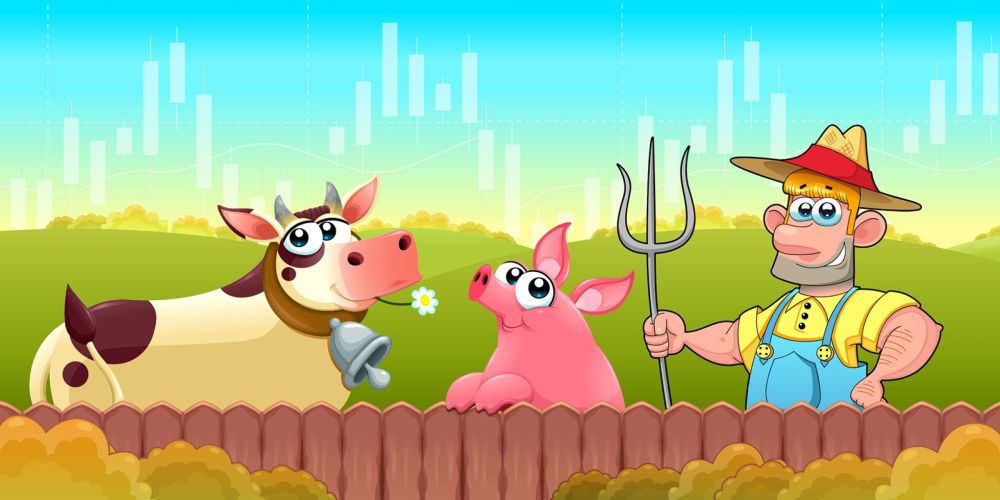To give you an idea of the consumption level, analysts believe that over a billion pigs are butchered annually for pork. Additionally, their estimations state that over a billion cows are being grown simultaneously around the world for beef production.
With such high demand, imagine getting in on the cattle and/or hog market and the implications for your portfolio. This is the type of consideration that has led to the lucrative discipline of these livestock futures.
What Are Futures?
Prior to diving into a specific kind of future, you need to understand what futures are and how they work. The simple definition is that futures are contracts of purchase commitment. A buyer and seller come to an agreement on an item price for a future date. No matter what the real-world value of the item is on the date stipulated, the item must be traded at the price that was established in the contract.
These contracts are typically very detailed and meet an established standard that allows for trading on a futures exchange. The idea of the standard is maintenance of liquidity and so things such as size, date, quantity, etc., are detailed according to said standard.
The purpose of the buying and selling of futures is to prepare for speculated movements, which can affect the value of the asset being offered by the seller. Buyers typically expect the value of the asset to appreciate over time, while sellers typically expect a drop in its value. If the value of the asset increased since the contract was established, then the buyer profits and the seller loses. Similarly, if the asset has a lower value than it did when the contract was initially established, the seller profits and the buyer loses.
Cattle Futures explained
Now that the general concept of futures has been covered, it is time to focus on cattle futures. Futures contracts are used for the trading of cattle. Since these are live animals that need to be sold regardless of market moves, the futures requirement ensures that trading takes place by locking buyers and sellers into a transactional agreement. Initially, the idea was to allow end users of the cattle rearing trade to make purchases of the commodity for their use. Today, however, anyone with a brokerage account can engage in this commodity trade.
The cattle traded via futures contracts fall into one of two categories. These are feeder cattle and live cattle. The difference between the two is based on the stage of development of the cattle.
Live cattle are those that are not yet ready to be slaughtered. These cattle are typically on the smaller side and included calves, 800 lb. cows, and everything in between. These cattle take several months to gain the required weight to reach the feeder category.
Feeder cattle are those that are near to slaughter. When live cattle transition to this phase, they are taken to feeder lots where they are fed a specific diet that facilitates quick weight gain. Slaughtering usually takes place when the cows get to 1,250 lbs.
The cattle market provides investors with the option of supplementing their own food requirements, using the cattle for profit, or both. It is important to stay abreast of the trends that shift the value of cattle, such as climate and feed prices. While demand is important, these factors weigh more heavily on market moves.
On another note: hog Futures
Unlike cattle futures, hog futures are not very complex. These futures are used to alleviate the risk in price moves to both consumers and producers. The hog futures market is used for the trade of lean hogs. Lean hogs account for most of the pork meat in the United States.
Producers of said hogs enter the market to protect themselves against potential price drops. They lock in a price no matter where the market takes the value of the hogs. Since the seller is selling the commodity, the hedging strategy used here is known as a short hedge.
Consumers on the other hand attempt to protect themselves from potential value increases with these futures. On the purchasing side, this strategy is known as a long hedge.
Like cattle futures, buyers may use the commodity to supplement their own food stores, as a source of profit via sale, or both. Lean hog value is also affected by external factors such as widespread hog diseases, feed prices, etc.
Final Remarks on cattle futures explained
While hog and cattle futures are an interesting form of trading, they are not offered by every exchange. In fact, hog futures are only traded on the Chicago Mercantile Exchange (CME), while cattle futures are traded on the CME and the Brazilian Mercantile and Futures Exchange (BM&F).
-

The rhytm beneath the noise
-

You Don’t Need a Trading Style. You Need an Edge.
-

Consistency Isn’t the Goal—It’s the Outcome
-

What 2 Quadrillion Data Points Told Us
-

Math and Physics-Based Trading in Any Market Condition
-

Do not worry about anomalies
-

Consistency should not be the goal. Consistency should be the result.
-

Stop canceling fridays
-

The Elliott Wave Forecast is Subjective, Bias Driven And Backwards looking
-

Finding patterns in market data

